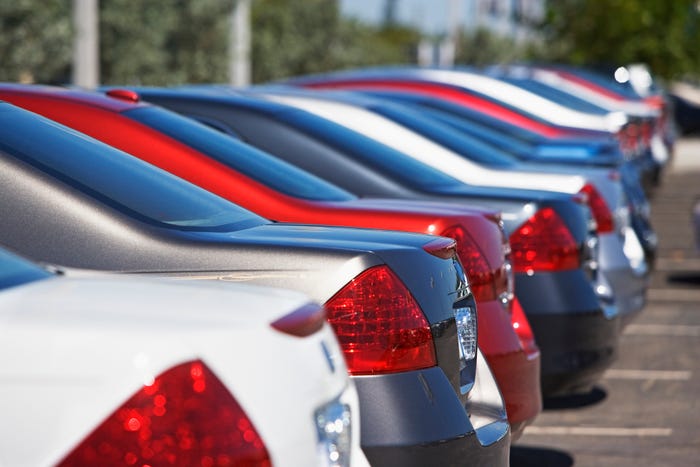BMW’s Fourth-Gen X5 SUV Aims for Top of Class
Set to go on sale in North America before the end of the year following a September public debut at the Paris auto show, the premium-brand SUV has been comprehensively re-engineered for what will be the X5’s 20th year of production in 2019.
June 6, 2018

SPARTANBURG, SC – The lead developer of the new BMW X5 insists the fourth-generation model has advanced sufficiently to belong at the very top of its class against European competition such as the Audi Q7, Jaguar F-Pace, Porsche Cayenne and Mercedes-Benz GLE.
Set to go on sale in North America before the end of the year following a September public debut at the Paris auto show, the premium-brand SUV has been comprehensively re-engineered for what will be the X5’s 20th year of production in 2019.
It adopts a new platform shared with the upcoming X7 as well as larger external and internal dimensions, updated powertrains and the latest in the German automaker’s digital cockpit and infotainment functions within a more versatile and luxurious cabin.
Project leader Johann Kistler claims the X5’s new platform, which shares key elements with the CLAR architecture used by existing BMW 5- and 7-Series models, elevates the overall capabilities of the X5 to a new level.
“We’ve built on the X5’s dynamic qualities with the inclusion of developments such as Integral Active Steering (BMW-speak for rear-wheel steering) and the latest version of Dynamic Drive Active Roll Stabilization (electrically operated anti-roll bars), but we’ve also added an extra layer of luxury and comfort that we think will provide the new model with more appeal than ever,” says Kistler, who also headed the development team responsible for the latest 5-Series.
Viewed by WardsAuto in an engineering workshop at BMW’s Spartanburg factory in South Carolina, where the new model will be produced alongside the X3, X4, X6 and upcoming X7, the X5 is larger than its predecessor in every vital dimension: length stretches 1.4 ins. (36 mm) to 193.7 ins. (4,920 mm); width increases 1.3 ins. (33 mm) to 77.6 ins. (1,971 mm) and height is up 0.4 in. (10 mm) to 68.4 ins. (1,737 mm).
The wheelbase is increased 1.7 ins. (43 mm) in length to 117.1 ins. (2,974 mm) in a move that provides the new BMW with slightly shorter overhangs as well as larger front and rear door apertures for greater ease of entry to the interior.
Key among the chassis developments brought to the new X5 is an optional air suspension featuring front and rear air springs, as is seen on the latest 7-Series. Available as part of a package that brings off-road driving modes (X Sand, X Rock, X Snow and X Gravel) and differential lock, it replaces the setup of the outgoing third-generation model, which used air springs only at the rear, in combination with a chassis boasting double wishbones up front and a five-link arrangement at the rear.
A stiffer body shell with added aluminum is said to offer a near-33% increase in torsional stiffness to help better isolate road shock and secondary vibration.
The engine lineup for the new X5 at the start of sales includes two gasoline and two diesel units.
In the U.S., the X5 will launch first with BMW’s familiar turbocharged 3.0L inline 6-cyl. with 335 hp and 330 lb.-ft. (447 Nm) of torque in the xDrive40i as well as the turbocharged 4.4L V-8 with 456 hp and 479 lb.-ft. (649 Nm) in the xDrive50i.
No word yet on whether a diesel will come to the U.S. Elsewhere, the diesel lineup kicks off with the turbocharged 3.0L inline 6-cyl. xDrive30d, which offers 261 hp and 457 lb.-ft. (620 Nm) of torque. Positioned atop the initial lineup will be the M50d M Performance, whose quad-turbocharged 3.0L inline 6-cyl. delivers 394 hp and 531 lb.-ft. (720 Nm).
Further engines will follow, including a more powerful version of BMW’s turbocharged 3.0L inline 6-cyl. diesel with 316 hp and 501 lb.-ft. (679 Nm) in the xDrive40d and a plug-in hybrid powertrain running a turbocharged 2.0L 4-cyl. gasoline engine in combination with a gearbox-mounted electric motor offering a combined 308 hp and 332 lb.-ft. (450 Nm) of torque in a successor model to today’s xDrive40e.
As with today’s X5, all models come as standard with an 8-speed torque-converter-equipped automatic transmission and BMW’s xDrive all-wheel-drive system.
The new X5’s styling is evolutionary in nature, with the exterior taking on a slightly tauter look and new detailing. The front is dominated by a large and angular kidney-shaped grille that, in keeping with BMW’s more recent models, is joined in the middle to help give it greater prominence and receives active air flaps to help the new SUV achieve a drag coefficient of 0.31 in xDrive30d guise.
Inside, there’s a larger cabin with newly designed seats offering incremental increases in leg-, head- and shoulder room. The dashboard shares its design with the unit that will feature in the larger X7, with a new multi-function steering wheel and switchgear. Highlights include a standard 12.3-in. (31-cm) high-definition instrument display together with a similar-sized infotainment monitor, both using BMW’s new ID7 operating system.

European version of '19 BMW X5.
Buyers will be able to option the new SUV with a larger third-generation head-up display unit providing more information than that available on the outgoing X5; a Bowers and Wilkens Diamond Plus 3D Surround Sound system featuring 20 speakers and a 1,500-watt subwoofer; conversational speech-recognition control; gesture control; and a touch-control second-row entertainment system.An optional third row offering two added seats is claimed to provide added leg- and headroom compared with that of the previous X5.



